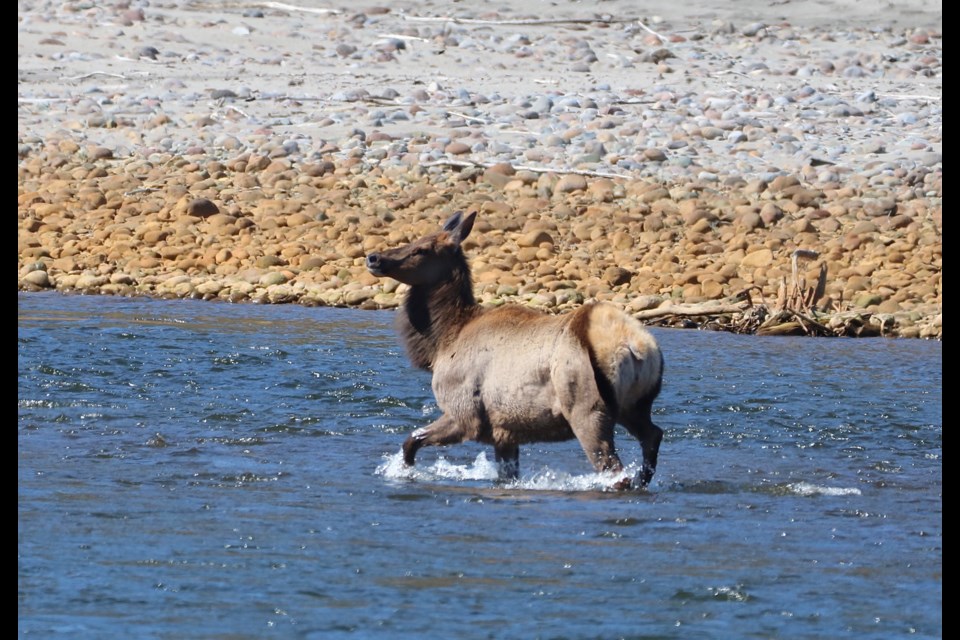Some locals got to witness more wildlife than they had expected on Monday when wolves were spotted chasing an elk at the Mamquam River.
Aafreen Arora raised her camera and captured the moment, while Kerry Lawson caught the action on video while having a picnic with a friend.
Last both locals saw, the elk had evaded capture, but Lawson said 10 wolves in total came out of the forest.
Meg Toom, the District of Squamish's wildlife educator, told The Chief local deer and elk are favourite meals for the wolves.
"Over 100 years ago we used to have elk roaming through the Squamish Valley. Hunting was unregulated at that time and the population was completely decimated," Toom said. "In 2006, the Ministry of Forests, Lands and Natural Resource Operations Development reintroduced a herd of 26 elk up into the Upper Squamish Valley."
Those elk were taken from Powell River.
In 2011, a small herd of eight elk was taken from Sechelt and reintroduced into the Mamquam River Watershed.
One of the eight was taken down by a cougar within 24 hours. Though they were reproducing, seven have been killed since 2012 by vehicles on the highway.
Toom said her cameras in the Adventure Centre area haven't caught any elk for two years and the ministry doesn't track the herd closely.
"If there are some on the Mamquam River as evidenced by the video and the photos then clearly there are a few still out on the east side of Mamquam River and Squamish River."
"Since their introduction in 2006, we have started to see a bit more wolf movement and wolf sightings following the prey," Toom said.
The elk herd originally placed in the Upper Squamish has thrived.
She said it is hard to tell from the photos and video, but it seems to be a younger, possibly female elk, though it doesn't appear pregnant.
Wildlife viewing tips
In terms of wolves, Toom says it is important dogs are kept on a leash on trails.
"They aren't necessarily a human safety concern, it is more the dog might be seen as prey or the dog might be seen as competition," she said.
It is calving season for elk from mid-May to early July.
"There will be elk calves around. The female will leave the herd for a couple of weeks to give birth and then they'll rejoin the herd. So, they will be in a vulnerable situation for the next couple of months."
Toom said there is likely to be a lot of wildlife, including offspring, in and around Squamish in the next while, so residents should give them an extra-wide berth.
"You have got wolves having their pups in April and May. You have elk having their calves from May to July. You have the coyotes having their pups right now as well," she said. "It is spring and there is going to be a lot of wildlife looking for food to feed their young. It is so important to keep dogs on leash and close by on trails. My cameras pick up a lot of dogs that are off leash," she said, adding that one of her cameras is set up on a vacant bear den and she has recorded multiple off-leash dogs come in and sniff the den.
"It is one thing to have your dog off leash, but at least keep it on trail. Don't let it duck into the bushes because you have no idea what is in the bush and you don't want any interactions where the pet is going to get injured or the wildlife is going to be harassed."
Keeping your distance and practising ethical photography using a telephoto lens, is important as well.
"Anytime you are disturbing an animal from finding food or eating food you interrupt that cycle that is really important for them," she said, adding those shots where the animal stops grazing and is looking at the camera is that animal being interrupted.
"Anytime you interrupt their feeding, we've impacted their lives,” she said.





